i have implemented a simple DFS (non recursive) that 'tests' if a Path between StartNode and EndNode exists. It works as expected ( handling bidirectional/directional graphs ) - but i just can't figure out how to store the Path for later usage.
Currently i am debug-printing Visited nodes, but it's not what is should be storing.
Can somebody please help me out / shed a bit of light on - what exactly should i store and at what point to return a list of nodes from NodeStart to NodeEnd ?
Here is the example Graph:

Here is the DFS traversing function:
bool DFS(CNavigationGraph *pNavGraph, CNavigationGraphNode* pFromNode, CNavigationGraphNode* pToNode)
{
assert(pNavGraph);
assert(pFromNode);
assert(pToNode);
std::vector<CNavigationGraphNode*> vpVisitedNodes;
std::vector<CNavigationGraphNode*> stack;
stack.push_back(pFromNode);
while(!stack.empty())
{
CNavigationGraphNode *pTop = stack.back();
stack.pop_back();
// Ok We've reached pToNode - means, path pFromNode to pToNode available
if(pTop == pToNode)
{
for(int a = 0; a < vpVisitedNodes.size(); a++)
{
CLogger::Instance()->Write(XLOGEVENT_LOCATION, "{VISITED} %s",vpVisitedNodes[a]->GetNodeName().data());
}
return true;
}
// Add to visited list
vpVisitedNodes.push_back(pTop);
// Look for adjacent Nodes for pTop
std::vector<CNavigationGraphNode*> vpAdjacentNodes;
pNavGraph->GetAdjacentNodes(pTop->GetNodeName(), vpAdjacentNodes);
for(int x = 0; x < vpAdjacentNodes.size(); x++)
{
// Add to stack if not visited
if(IsVisited(vpVisitedNodes, vpAdjacentNodes[x]) == false)
stack.push_back(vpAdjacentNodes[x]);
}
}
// Path not found
return false;
}
Here is the Debug Output:
Find Path Between Node1 and Node3
<main> [] DFS TRAVERSE TEST (DIRECTIONAL)
<DFS> [] {VISITED} Node1
<DFS> [] {VISITED} Node4
<DFS> [] {VISITED} Node5
<main> [] Path from Node1 to Node3 - YES
Find Path Between Node3 and Node1
<main> [] DFS TRAVERSE TEST (DIRECTIONAL)
<main> [] Path from Node3 to Node1 - NO
On the second argument: what do you mean by the stack not being robust? – Barney Szabolcs Dec 09 '12 at 14:42